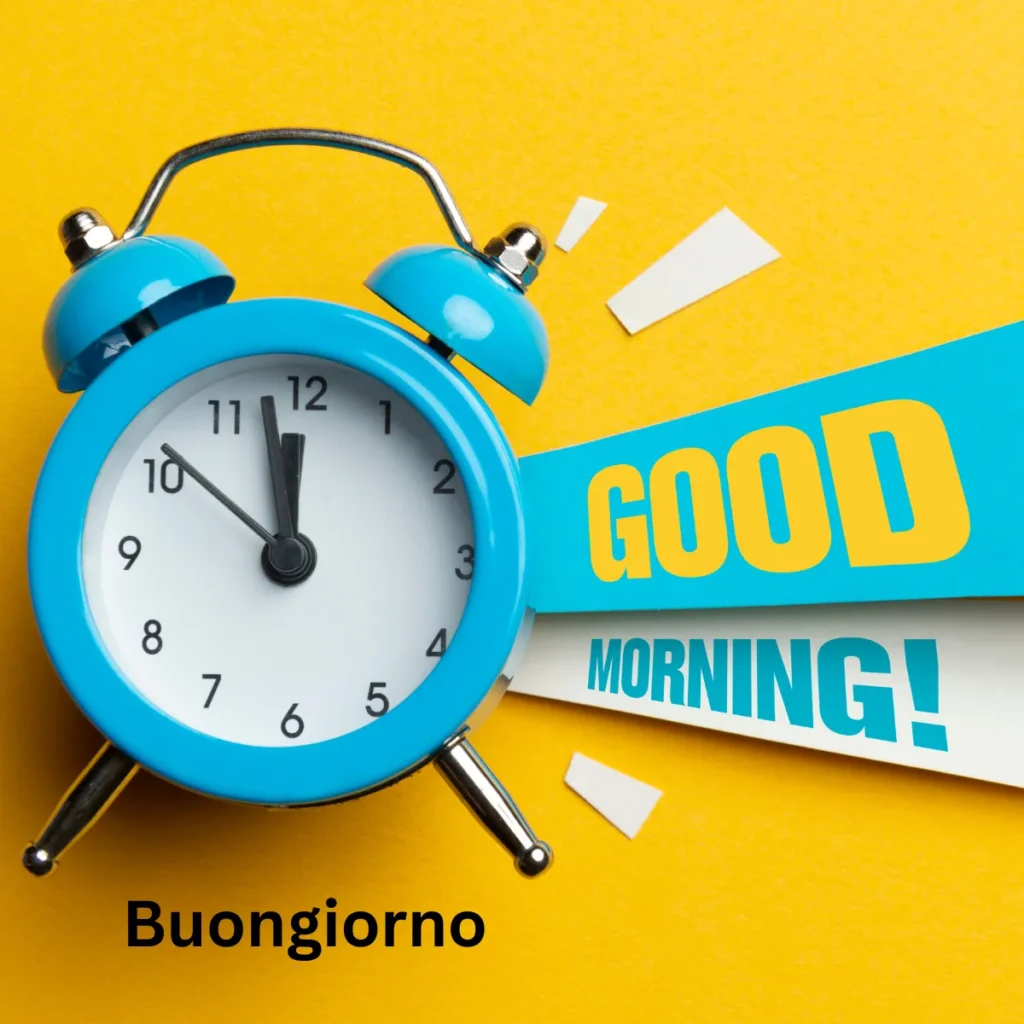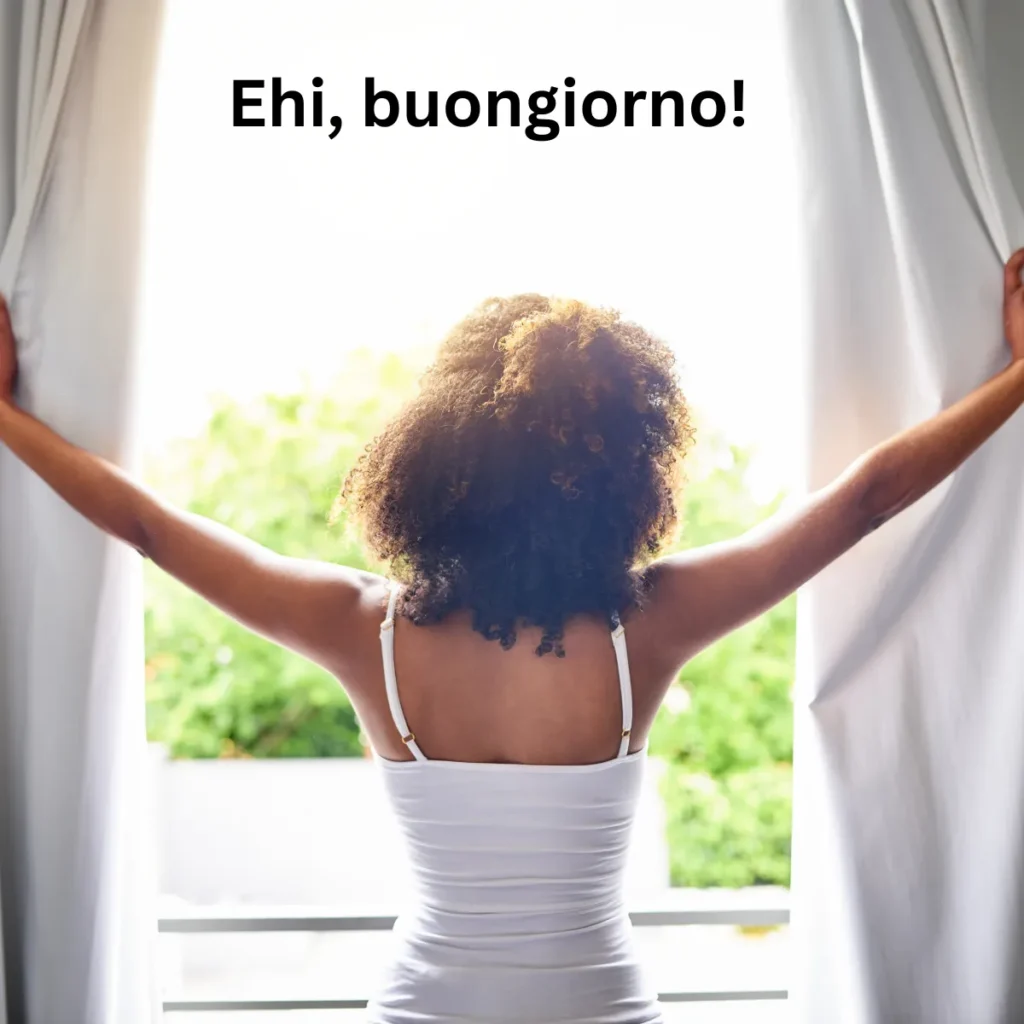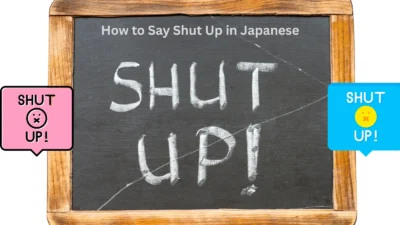How to Say Good Morning in Italian is one of the first phrases you’ll want to learn when starting the language. In Italian, greetings are not just words—they reflect warmth, culture, and respect.
Knowing how to say “good morning” correctly will help you make a polite and friendly impression, whether you’re greeting friends, colleagues, or strangers. The most common phrase is buongiorno, used both in casual and formal settings.
Mastering this greeting will make your Italian sound more natural and welcoming.
Good Morning in Italian
15 Ways to Say Good Morning in Italian
| No. | Italian Phrase | Pronunciation | Meaning / Usage |
|---|---|---|---|
| 1 | Buongiorno | bwohn-JOR-no | Standard “Good morning” (formal/casual) |
| 2 | Buona giornata | BWOH-nah jor-NAH-tah | Have a good day |
| 3 | Ciao, buongiorno | chow bwohn-JOR-no | Hi, good morning (casual) |
| 4 | Buon dì | bwohn DEE | Old-fashioned, poetic “Good day” |
| 5 | Salve, buongiorno | SAL-veh bwohn-JOR-no | Polite hello, good morning |
| 6 | Buongiorno a tutti | bwohn-JOR-no ah TOO-tee | Good morning everyone |
| 7 | Un buongiorno speciale | oon bwohn-JOR-no speh-CHA-leh | A special good morning |
| 8 | Ti auguro un buongiorno | tee OW-goo-ro oon bwohn-JOR-no | I wish you a good morning |
| 9 | Buongiorno carissimo | bwohn-JOR-no kah-REE-see-mo | Good morning dearest (affectionate) |
| 10 | Buongiorno amore | bwohn-JOR-no ah-MOH-reh | Good morning my love |
| 11 | Buongiorno, come stai? | bwohn-JOR-no, KOH-meh STAI | Good morning, how are you? (informal) |
| 12 | Buongiorno, come sta? | bwohn-JOR-no, KOH-meh STAH | Good morning, how are you? (formal) |
| 13 | Spero tu abbia un buongiorno | SPEH-roh too AH-bya oon bwohn-JOR-no | I hope you have a good morning |
| 14 | Ti mando un buongiorno | tee MAHN-do oon bwohn-JOR-no | I send you a good morning |
| 15 | Buongiorno di cuore | bwohn-JOR-no dee KWOH-reh | Good morning from the heart |
Let’s explore 15 ways to greet someone in the morning in Italian—with examples and cultural context to help you connect with confidence.
1. Buongiorno
Meaning: Good morning

Origin:
Derived from “buon” (good) and “giorno” (day). This is the most standard and widely used morning greeting in Italy.
Example:
👤 User A: Buongiorno, signora Rossi!
👤 User B: Buongiorno! Come sta oggi?
Use: Formal to neutral; appropriate for any setting—work, cafes, or shops.
2. Buona giornata
Meaning: Have a good day
Origin:
Used more as a farewell greeting after saying “Buongiorno.” It’s a wish for someone’s day to go well.
Example:
👤 User A: Devo andare adesso. Buona giornata!
👤 User B: Anche a te, ciao!
Use: Polite, commonly used when leaving.
3. Ciao
Meaning: Hi / Bye
Origin:
From the Venetian dialect word “s-ciào,” meaning “I am your servant.” Over time, it became a universal informal greeting.
Example:
👤 User A: Ciao, Marco! Dormito bene?
👤 User B: Ciao! Sì, benissimo, grazie!
Use: Informal; used between friends and peers.
4. Ehi, buongiorno!
Meaning: Hey, good morning!

Origin:
“Ehi” is the Italian equivalent of “Hey” and adds a friendly, upbeat tone to the traditional greeting.
Example:
👤 User A: Ehi, buongiorno! Pronto per la riunione?
👤 User B: Sempre! E tu?
Use: Informal and cheerful.
5. Salve
Meaning: Hello (formal-neutral)
Origin:
From Latin “salvē,” meaning “be well.” Used today as a polite, slightly formal greeting at any time of day.
Example:
👤 User A: Salve, sono qui per l’appuntamento.
👤 User B: Salve! Accomodati, prego.
Use: Semi-formal; good for people you don’t know well.
6. Buon dì
Meaning: Good day
Origin:
An older, regional version of “Buongiorno,” still used in Tuscany and northern Italy.
Example:
👤 User A: Buon dì, signore!
👤 User B: A lei, buongiorno!
Use: Slightly formal or poetic; less common today.
7. Mattinata felice!
Meaning: Happy morning!

Origin:
A cheerful, literal phrase not commonly used but understood as a bright, poetic morning wish.
Example:
👤 User A: Mattinata felice, amico mio!
👤 User B: Grazie, altrettanto!
Use: Very informal or artistic; used in poetic speech or affectionate messages.
8. Giorno!
Meaning: Morning!
Origin:
A clipped, casual version of “Buongiorno.” Popular among friends and coworkers.
Example:
👤 User A: Giorno, ragazzi!
👤 User B: Ehilà! Tutto bene?
Use: Informal; friendly and relaxed.
9. Che bella giornata!
Meaning: What a beautiful day!
Origin:
Used more as a comment than a greeting, but often spoken when meeting someone in the morning.
Example:
👤 User A: Che bella giornata, eh?
👤 User B: Davvero! Perfetta per un caffè fuori.
Use: Friendly, used to break the ice.
10. Alzato presto oggi?
Meaning: Up early today?
Origin:
A conversational morning opener that functions like a greeting with a question.
Example:
👤 User A: Alzato presto oggi?
👤 User B: Eh sì, troppi impegni!
Use: Informal, personal.
11. Tutto bene stamattina?
Meaning: Everything okay this morning?
Origin:
A friendly check-in that works like a morning greeting.
Example:
👤 User A: Tutto bene stamattina?
👤 User B: Sì, grazie! E tu?
Use: Casual; great for family and coworkers.
12. Buon risveglio!
Meaning: Good awakening!

Origin:
A poetic or romantic way to greet someone just waking up.
Example:
👤 User A: Buon risveglio, amore mio.
👤 User B: Grazie, dormito benissimo!
Use: Very affectionate; for close relationships.
13. Bella mattina, vero?
Meaning: Beautiful morning, right?
Origin:
Common in small talk when meeting someone outside or on a walk.
Example:
👤 User A: Bella mattina, vero?
👤 User B: Sì, finalmente un po’ di sole!
Use: Informal and conversational.
14. Caffè?
Meaning: Coffee?
Origin:
In Italy, coffee is synonymous with starting the day. Asking someone if they want a coffee is often how mornings begin.
Example:
👤 User A: Caffè?
👤 User B: Sempre! Non posso iniziare senza.
Use: Super informal; culturally iconic.
15. Sveglio finalmente?
Meaning: Awake finally?
Origin:
Playful or teasing way to greet someone who likes to sleep in.
Example:
👤 User A: Sveglio finalmente?
👤 User B: Ahah, sì! Il letto era troppo comodo.
Use: Humorous and personal.
Conclusion:
Learning how to say good morning in Italian is a simple yet powerful way to start your day with positivity. Whether you use buongiorno in a formal setting or a lighter phrase with friends, greetings in Italian always carry warmth and friendliness. By practicing these phrases, you’ll not only sound more natural but also connect better with Italian speakers in everyday life.



